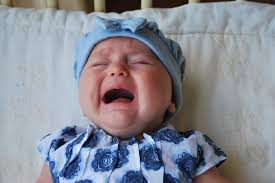70% of children non fatal traumatic brain injury are caused by consumer products or activities related to them
 Children and adolescents are prone to traumatic brain injuries (TBI). Among the 1.7 million patients diagnosed every year with TBI in the US, 700,000 are children below 19 year old. A recent study by Bina Ali, Bruce A Lawreence, Ted Miller from the Pacific Institute for Research and Evaluation and Jennifer Allision from Health Imperative in Brockton, MA that was recently published in the Official Research Journal of the International Brain Injury Association (IBIA) investigate leading consumer products and activities that can cause children and adolescents to suffer traumatic brain injury.
Children and adolescents are prone to traumatic brain injuries (TBI). Among the 1.7 million patients diagnosed every year with TBI in the US, 700,000 are children below 19 year old. A recent study by Bina Ali, Bruce A Lawreence, Ted Miller from the Pacific Institute for Research and Evaluation and Jennifer Allision from Health Imperative in Brockton, MA that was recently published in the Official Research Journal of the International Brain Injury Association (IBIA) investigate leading consumer products and activities that can cause children and adolescents to suffer traumatic brain injury.
By analyzing data from from the National Electronic Injury Surveillance System from 2010 to 2013, the searchers found that home furnishings and fixtures as well as sports and recreation products were the products most commonly associated with accidents causing TBI. Beds, stairs, floors and footballs are among the most dangerous products for children and teenager.
Toddlers and older teens most at risk of a TBI
TBI cases were identified in the database as all head injuries classified as concussion, fracture or internal organ injury. Searchers found that during the period studied, 4,091,376 children and adolescents below 19 year old visited the ER and were diagnosed with one of these types of injuries. 380,842 were babies younger than 1 year old, 1,085,690 were toddlers between 1 and 4 year old, 682,826 were young children between 5 and 9 year old, 834,565 were older children between 10 and 14 year old and 1,107,463 were adolescents between 15 and 19 year old.
More than 90% of the injuries studied were unintentional and the young patients were released the same day after being treated in a ED. More than three fourth of the cases were internal organ injuries and almost the same amount were associated with a consumer product. Sports and recreation products were associated with 28.8% of these injuries, home furniture and fixtures with 17.2%, home structures and construction material with 17.1%, child nursery equipment with 2.7%, toys with 2.4%, personal use items with 1.4%, home electronics and hobby with 0.7%.
The type of products associated with the TBI diagnosis differ by age groups. Most brain injuries associated with home furnishing and fixtures were diagnosed in babies younger than 1 year old (42.7% of them). Babies also accounted for 23.6% of TBI diagnosis associated with home structures & construction materials and 18.8% of TBI diagnosis associated with child nursery equipment. 54% of the TBI associated with sports and recreation products were diagnosed on 10 to 14 year old children, 36.4% on 15 to 19 and 31.8 on 5 to 9 year old.
The leading products contributing to non fatal traumatic injuries are the beds for the less than one year old, the stairs for the 1 to 4 year old, the floors for the 5 to 9 year old and the footballs for the 10 to 19 year old.
The entire study can be downloaded here
https://www.tandfonline.com/doi/full/10.1080/02699052.2019.1631483
 New York Personal Injury Attorneys Blog
New York Personal Injury Attorneys Blog


